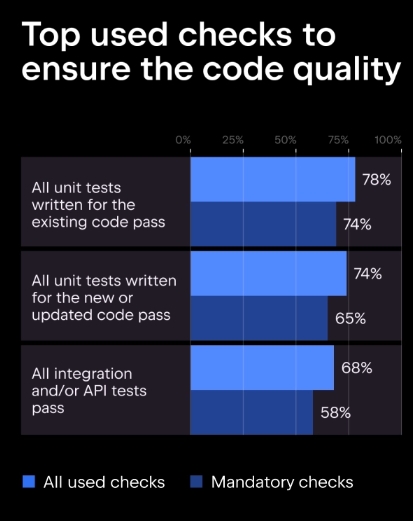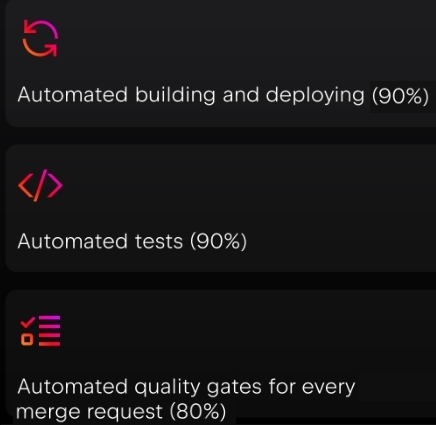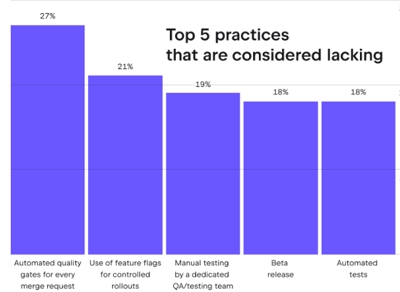| JetBrains Reports On Software Quality |
| Written by Sue Gee |
| Wednesday, 05 February 2025 |
|
JetBrains has released the results of its inaugural annual report of State of Software Quality Report by Qodana. This research was conducted to gain a deeper understanding of best practices for delivering quality software and how companies of different sizes and maturity levels determine when their product is production-ready. Qodana is a static analysis engine that brings inspections from JetBrains IDEs to any CI pipeline and runs resource-intensive checks on the CI server. It was released in a preview version in 2021 and was released commercially in 2023. For this report JetBrains surveyed 808 software developers and QA engineers to analyze how teams ensure software quality, what tools and processes they use, and how priorities shift from the development to the production stages. The key discovery of the exercise is a clear shift toward more rigorous practices for ensuring software quality as products evolve from launch to maturity. According to JetBrains this reflects the increasing complexity of maintaining code quality as companies grow and that: Larger teams and mature products require stricter controls, which pay off with improved reliability, performance, scalability, and cost savings. The survey revealed the widespread use of unit tests to ensure code quality among all respondents at all stages of development. It also sowed a distinct shift in moving from manual to automated methods. Unit tests are used by 65% to 69% of teams as mandatory checks for code going into production, while 58% also rely on integration tests as a critical step in their process. The mandatory checks for releasing code to production is primarily automated.
Looking at methods of assessing production readiness, the top three highest-rated practices were all automated, as opposed to manual. Automated build and deployment and automated tests were both seen as "effective" or "very effective" by 90% of respondents and went from being practices used by around 55% of teams at development stage of a product to over 75% at the stage of maturity, As well as being the third highest-rated practice for ensuing software quality, the use of automated quality gates for every merge request was seen as the top practice that was lacking, although only by 27% of respondents who said that given more resources and time it is something they would implement to ensure that only top-quality code is admitted.. If you are not familiar with this practice, it refers to using a set of predefined criteria that code changes must meet before they can be merged into the main codebase. These "gates" run automatically as part of the continuous integration/continuous delivery (CI/CD) pipeline, without requiring manual intervention. This is something that Quodana supports and the report recommends using it as a "Pro Tip". On the basis of its findings in this survey JetBrains anticipates a further shift away from manual quality assurance methods, noting: Companies are increasingly relying on automated quality gates and controlled rollouts as their products mature. For more of the Report's findings and useful insights it can be downloaded here:
More InformationJetBrains Software Quality Report 2024 Related ArticlesJetBrains Qodana - More Than Just A Linter To be informed about new articles on I Programmer, sign up for our weekly newsletter, subscribe to the RSS feed and follow us on Twitter, Facebook or Linkedin.
Comments
or email your comment to: comments@i-programmer.info |
| Last Updated ( Wednesday, 05 February 2025 ) |







